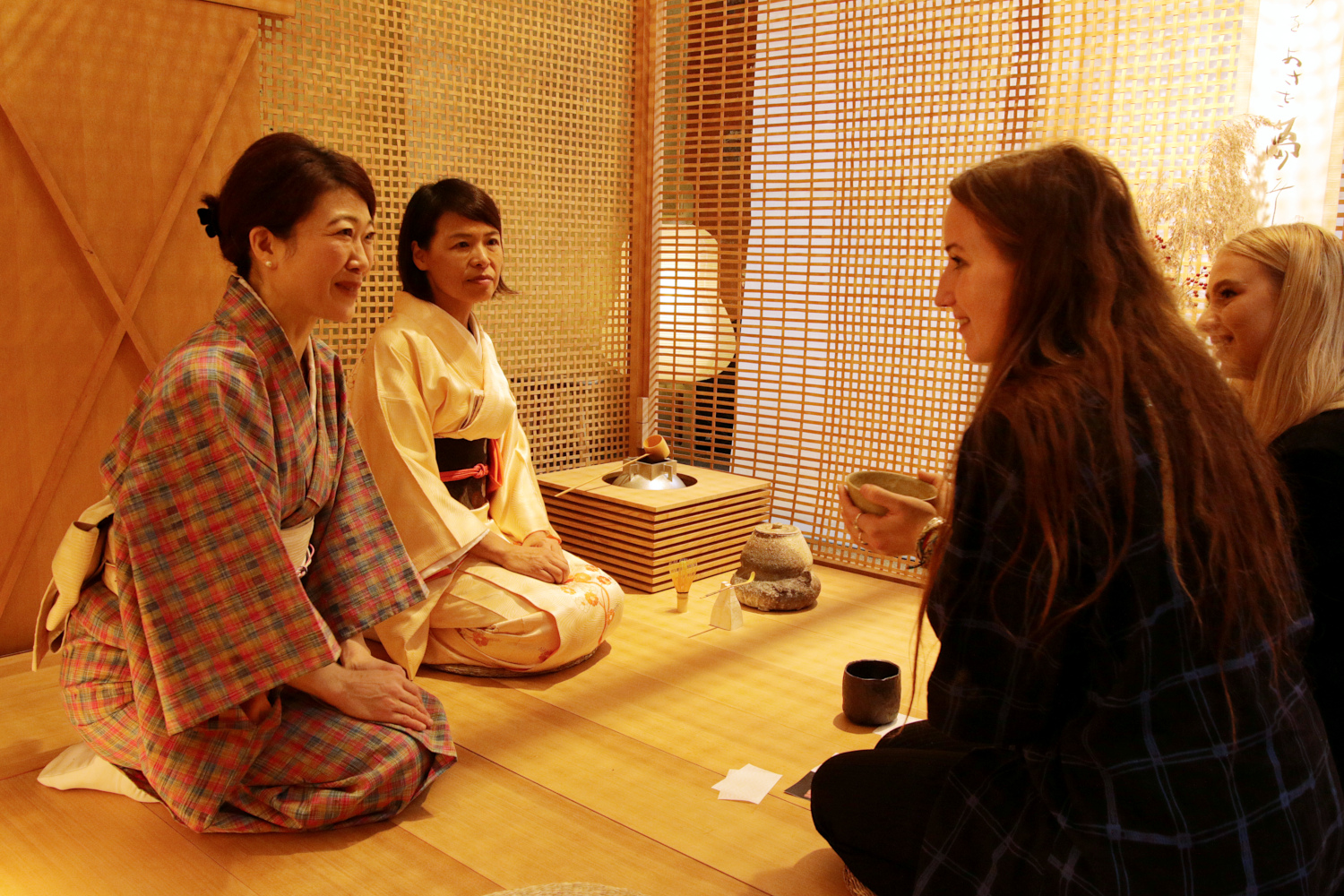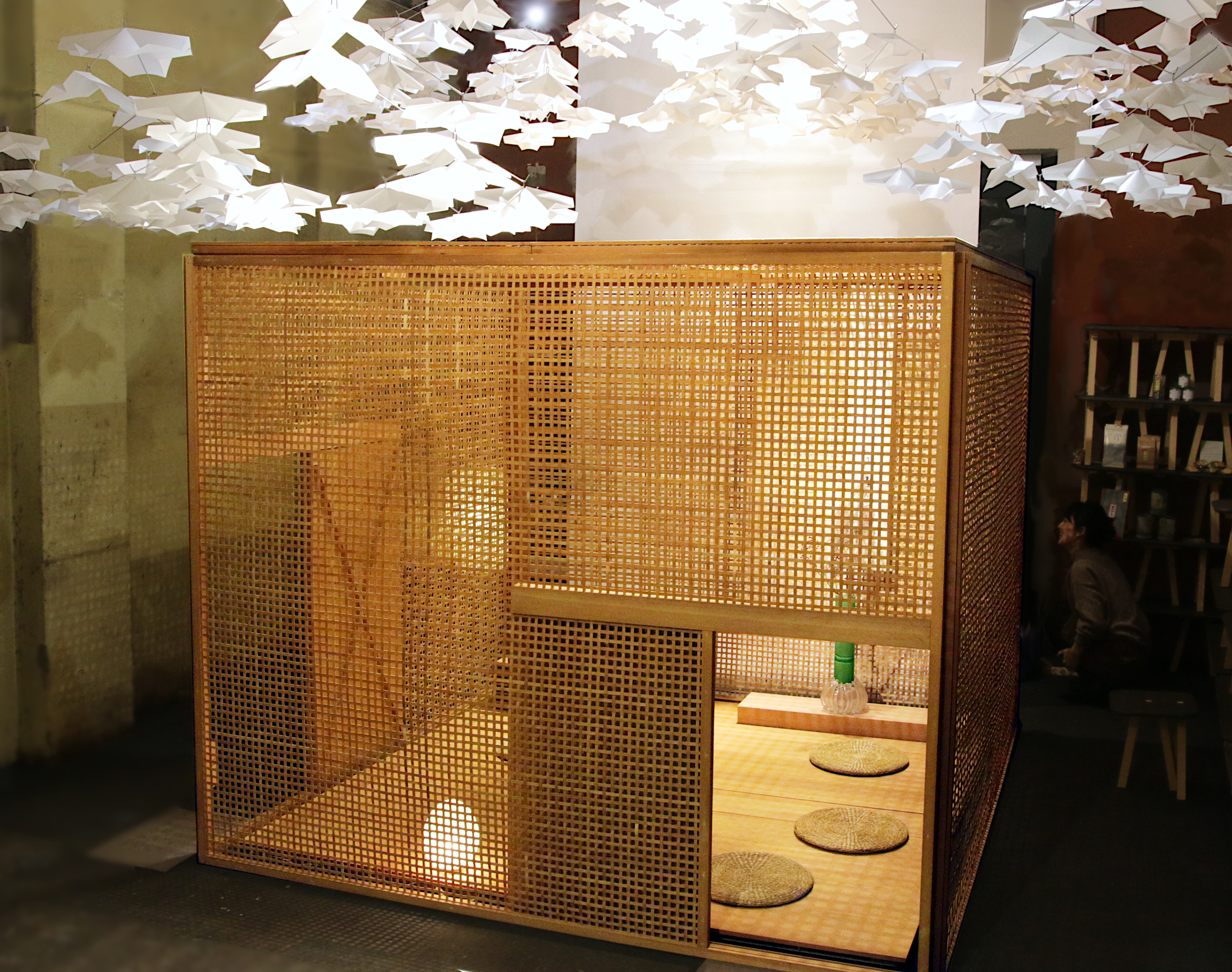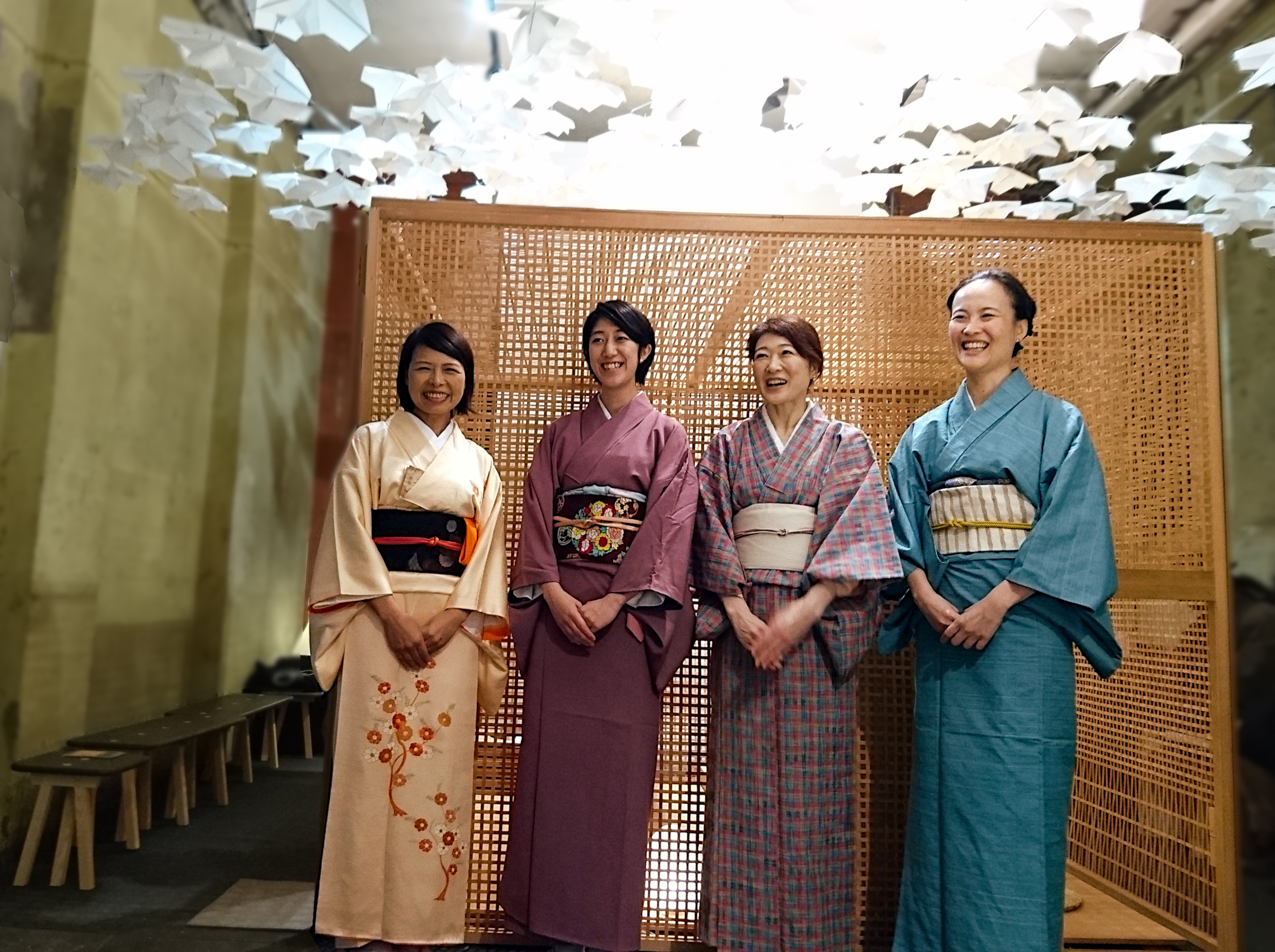Photo © Aux Mille Pins - Thés du Japon
Glace au Matcha - la fraîcheur qui fouette
Rêverie dans l’Osmanthus
Explorez la frontière du thé japonais
Dans la Lune
Matchamisù - le tiramisù au thé vert
Déclaration des Mille Pins – お茶のマニフェスト
Grand-père aux mains d’argent
CONCOURS - Haïkus du drôle de printemps | HAIKU CONTEST - Strange Spring
Green Smoothie - goûteux et sain
L'ivresse des fleurs
Poésie du thé et des sentiments
Chocolat obligatoire
Emiko et le salon de thé ambulant
Tea party in the orchards of Langenthal
Invitation to a Grand Tea Party
In the beautiful orchard of Langenthal beginning the second of November and continuing for three days the famed tea house Ji-an and a collection of tea utensils will be displayed to serious followers of tea, art and design.
Emiko Okamoto, Japan Tea Ambassador to Switzerland will be honoured to serve tea in and around the iconic folding tea house created by leading Japanese designer Shigeru Uchida.
The gathering is on the occasion of the 17th Designer’s Saturday, the major event of the Swiss design scene, held every second year. Attendants will have a chance to meet designers, producers and art & design schools. Discover and feel a kaleidoscope of innovative creations and scenographic gems.
Japan is the guest country of this exhibition celebrating creation, well-being and emotion is Japan. Compiling a unique and personal selection of outstanding designers, architects, makers of Japan, the curator of the DS 2018 - Jan Geipel - wanted additional to implement the unique Japanese ritual of tea as presented by Emiko Okamoto and Aux Mille Pins.
The curious and eager for beauty audience is invited to join us in Langenthal.
Teahouse Exhibition Credits
Organized by Jan D. Geipel, Curator DS18, and the Designer’s Saturday team
Tearoom and tea utensils: Uchida Design
Scenography and Minoshi Garden installation : atelier oï
Collaboration : Thomas Merlo & Partner
Mobile tea house 88 Pines: HEAD-Genève
Tea ceremony and presentation: Uchida Design and Emiko Okamoto
Matcha and leaf teas: Aux Mille Pins
"This invitation is not limited to Japan but extends to everyone who sets his heart on [the practice of tea], even to people on the continent."
Daimyō Toyotomi Hideyoshi’s invitation to the Grand Kitano Tea Gathering 北野大茶湯, in Kyoto, starting on November 1, 1587
— — — — — — — — — — — —
Impressions from Shigeru Uchida, designer of the Ji-an, So-an, Gyo-an teaROOMS
- excerpts from interview by Kriti Siddakais (2012) -
Shigeru Uchida (1943-2016)
Life is full of adventure. As a designer, I craft elements for daily life and extraordinary moments. [..]
The tea house - chashitsu - represents the wholeness of the Japanese conception of "space".
Space is altered according the circumstances. Change is in nature. In Japan the four seasons are revered. While nature orchestrates the alternation of the seasons we appreciate to reflect the change in our daily space. To enable this swing, space should always be kept empty.
For me the Japanese mind has a strong connection with space. Space must remain empty so to be able to fill it with all things. [..]
In the beginnings of my career I was using quite sober tones and would give precedence to emptiness in space, far from being colorful. My themes then evolved towards color and light. Color and light add lightness to the living space, allowing to escape from gravity. In the space one aims to be nothing, vacant. [..]
Designer's work is difficult. When possible I would like to offer users a way to free their hearts and minds. And escape from objects. When a designer creates an object, a gravity is born, too. With gravity, all things bear weight. My dream is to create a space where gravity is present while allowing users to liberate their hearts.
Like many Japanese designers, I do not create a place - boutique or commercial establishment - for the lucrative rewards of it. I plan spaces where visitors can be quiet, serene, enter into reflection or get excited. Profit has no place in the act of creation. [..]
As many designers, I'm very optimistic. One cannot be a designer without being an optimist.
Shigeru Uchida
© Aux Mille Pins, Emiko Okamoto
About the Tearoom
Tearoom 受庵 ( Ji'an ), 1993
Shigeru Uchida 内 田 繁 (1943-2016)
Japanese cedar, Spruce, Agathis, Bamboo
78 7/10 × 94 1/2 × 94 1/2 in; 200 × 240 × 240 cm
www.uchida-design.jp
In the sixteenth-century tea houses in the major towns of Japan were deliberately built in a rustic style, as a thatched hut, aiming to resemble a hermitage - 'a mountain dwelling in the city'.
The chashitsu conceived and perfected by zen tea master Rikyū follows this line, a place secluded from the world, with sand-textured walls.
In this project Shigeru Uchida explores a lightening of the walls structuring the traditional tea house. His guiding thought: ” If the walls are removed, is it possible to get the feel of the tea room space?”
He built a series of three tea rooms with see through walls of bamboo lattice and washi paper. This brings closeness to traditional japanese architecture which does not make use of walls, only ceiling and floor.
The tearooms are easily foldable and portable, and aimed for outdoor use. [We witnessed it being assembled and dismantled each time in a few minutes]. It is a key element in the view of Shigeru Uchida. As the tea house is impermanent it emphasizes its invitationing message: bring the mind and senses to openness and awakening during the special moment when it is put up.
The gesture of folding and unfolding the shashitsu should not be considered as mundane. When the tea house is on rest, hidden in its case, it accumulates an energy that is then released when the tea house is erected for the next display and use. The Ji-an tea house breathes life into fleeting and ethereal moments and encounters. A magic created only one-time.
The design gives precedence to lighting and a permeability between the outside nature and environment and the inner cell of the tea room.
It creates an intimate space surrounded with a patterned shadow effect. Informed by the rituals of the Japanese tea ceremony, the work is a celebration of the spirit of mindfulness, creating a modern meditative space in which the mind can contemplate and focus on the light and shadows created by the transparent walls.
The three tea houses refer to three of the five aggregates concepts of Buddhism i.e. elements that constitute and describe a sentient being’s mental and physical existence:
• Ji-an [vedanā Retreat ], the house of sensation - "feel" things that humanity feels
• So-an [samjna Retreat], the house of perception - things that mankind think
• Gyo-an [sankhara Retreat], the house of mental formations - humanity does things
Uchida’s tea houses are designed to be simple, beautiful objects in the spirit of Zen, as well as functioning tea houses that allow guests to relax in a contemplative, intermit space. Tea can be seen as a practice of past, present and future.
— — — — — — — — — — — —
A dreamlike luminescence
The light from the pale white paper, powerless to dispel the darkness of the alcove, is instead repelled by the darkness, creating a world of confusion where dark and light are indistinguishable. Have you not yourselves sensed a difference in the light that suffuses such a room, a rare tranquility not found in ordinary light? Have you never felt a sort of fear in the face of the ageless, a fear that in that room you might lose all consciousness of the passage of time ?— Junichirō Tanizaki, In Praise of Shadows, 1933

























